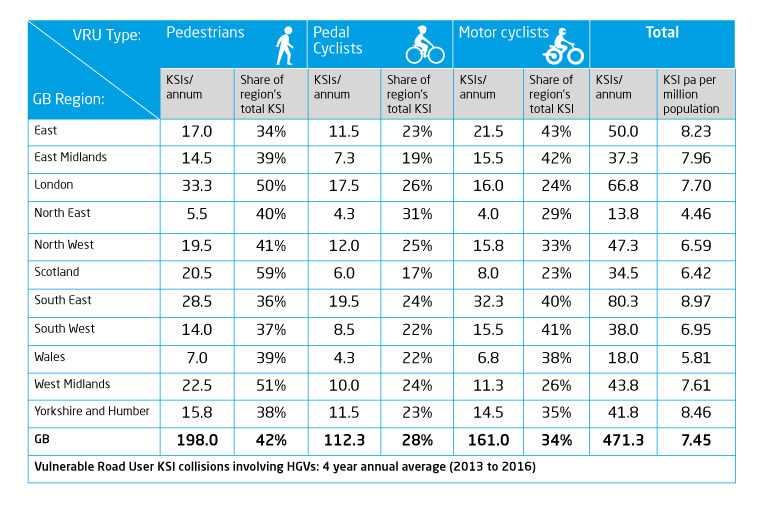Derek Rees, Project Director for CLOCS, assesses the impact of construction vehicle movements and outlines how the CLOCS initiative can help ensure the safest construction vehicle journeys.
Almost every UK town and city has government policies to improve air quality, ease congestion and reduce obesity – by encouraging more people to travel by foot and bike. This is dramatically increasing the number of people sharing the road. Combine that scenario with increased construction activity to meet demand for more homes and infrastructure – and you also have many more heavy goods vehicles on the roads, in the community and in close proximity to people.
In 2016, 463 Vulnerable Road Users (pedestrians, cyclists and motorcyclists) were killed or seriously injured in collisions involving HGVs on GB roads. Of those 463, 121 died within 30 days of the collision. Of those 40% were pedestrians, 38% were motorcyclists, and 21% were pedal cyclists.
The construction industry continues to be one of the most dangerous industries in the UK. Whilst every construction client and contractor know their incident data within the hoardings, some still don’t know how many fatal or serious injury collisions occur on journeys associated with their own projects.
Where are these collisions happening?
Collisions are happening in every region, everywhere. Population size/density isn’t a distinguishing factor as the ratio of KSIs per million population demonstrates. Over half (54%) of the 463 VRUs that were killed or seriously Injured (KSI) in collisions with HGVs were injured on urban roads in 2016 – compared to just 17% of other KSI casualties in the same collisions
The table below shows the annual average number of people killed or seriously injured (KSI) in each region between 2013 and 2016. All regions suffer a similar scale of fatal/serious injury compared to their population size.
The CLOCS Standard
The CLOCS Standard is a national industry standard and is the direct result of collaboration between the construction and fleet sector to address these shared issues. Representatives from 600 different organisations – regulators, construction clients, principal contractors, fleet operators, vehicle manufacturers/ suppliers and community groups are involved in CLOCS – ensuring a united response to promoting the safest vehicle journeys. It draws together evolving and applied best practice from several standards, policies and codes of practice to provide one industry standard that can be implemented by regulators, clients, principal contractors and fleet operators.
It defines the primary requirements placed upon the key stakeholders associated with a construction project and places responsibilities and duties on the regulator, the client, the principal contractor controlling the construction site and the supply chain, including the operator of any road-going vehicles servicing that project.
CLOCS Champions
A CLOCS Champion is an organisation that commits to implementing the CLOCS Standard across its business operations. It also commits to encourage its customers, suppliers and other relevant organisations to do likewise
Being a CLOCS Champion makes a clear corporate statement of an organisation’s commitment to prevent future collisions between HGVs and vulnerable road users by consistently implementing the CLOCS Standard and by working collaboratively with its customers, suppliers and other CLOCS Champions.










